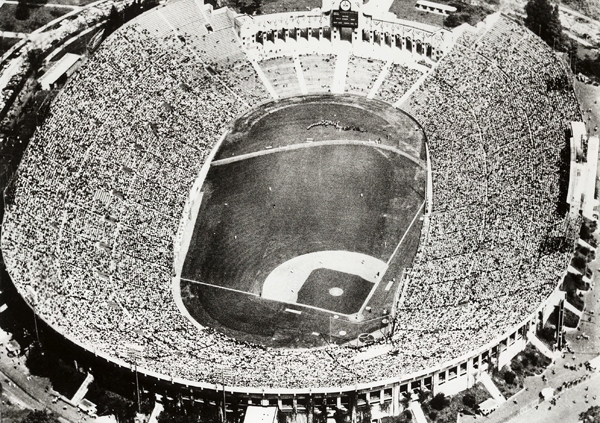Most Creative Fields of MLB’s Past
The end of summer is a perfect time for baseball and exploring the creativity of the early architect’s vision of our national pastime. So our team took to voting for the Top 5 Most Creative Fields of MLB’s Past.
Tiger Stadium was a classic example of the way the local environs created challenges that were often solved with creative, but quirky, solutions by ballpark designers. The right field overhang was necessary because Trumbull Avenue made any expansion beyond the ballpark impossible. Tiger Stadium had other quirks. A tall flagpole in center field, a few feet from the outfield wall, was in fair territory and a constant challenge for outfielders. Pillars holding up the upper deck obstructed the view of fans from many outfield seats.

The stadium, known as “The Mistake by the Lake,” was too vast for baseball but was needed for that purpose by the Indians for 60 years. Until the baseball dimensions were changed in the football-friendly stadium, center field was 470 feet from home plate and the left and right field corners were 463 feet—distances no home run hitter would ever love. When Bill Veeck owned the Indians, he installed fences that were shallower than the original walls and moved depending on what depth would benefit the Indians. MLB outlawed that practice.
Because of Municipal Stadium’s 78,000-seat capacity, which made regular baseball crowds look minuscule, the Indians played only weekend and holiday games in the park near Lake Erie from 1934-46. Weekday games were played at League Park, which had its own eccentricities. Situated in a rectangle defined by city streets, the park had a shallow (290 feet) left field. To mitigate the lack of depth, the fence in left field was 40 feet high, three feet higher than Fenway Park’s “Green Monster.”

The original wooden Baker Bowl, destroyed in an 1895 fire, was rebuilt with steel and brick. It was home of the Philadelphia Phillies and widely considered the first “modern” ballpark. Because the right field corner was only 279 feet from home plate, a 40-foot-high wall was erected to prevent routine popups from turning into home runs. In 1937, the right field wall was increased to 60 feet, much higher than the famous, 37-foot “Green Monster” in left field at Boston’s Fenway Park—one of the odder features in a Major League Baseball stadium.

Built as a memorial to all who served in the U.S. Armed Forces during World War I, the Coliseum hosted the 1932 Summer Olympics. Its 90,000-seat capacity was the largest in MLB history. To wedge a baseball field into the Coliseum, the left field fence was just 250 feet from home plate, a distance some recreation league softball hitters could reach today. A tall screen was added to make it more challenging for hitters to clear. On October 4, 1959, the Dodgers hosted Game 3 of the World Series against the Chicago White Sox—the first postseason game in MLB history played in California. The team moved into Dodgers Stadium in 1962.

Deep in center field (403 to 505 feet) but shallow and home run-friendly down the lines (276 feet in left and only 258 feet in right). The original site of this hallowed New York ballpark was in a corner of Central Park. People played polo nearby, hence the name Polo Grounds. The name stuck even when a new Polo Grounds was built farther uptown, at Coogan’s Hollow. Capacity was just 16,000 when the new ballpark opened, but by the 1950s, it was nearly 55,000 fans. The New York Giants played there until they moved to San Francisco in 1958. The Yankees moved into the Polo Grounds in 1913.
That arrangement worked fine until 1920, when the Yankees purchased Babe Ruth from the Boston Red Sox. The short right field played perfectly for the left-handed-hitting Ruth, and his popularity became an irritant to the Giants. In 1920, the Yankees drew 1,289,422 at the Polo Grounds, more than 300,000 more fans than the Giants. Pushed to move elsewhere by their in-city rivals, the Yankees moved into Yankee Stadium in 1923.
Copyright © 2024 9m Consulting - All Rights Reserved.

 208-881-3996
208-881-3996